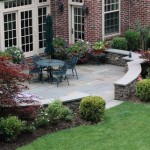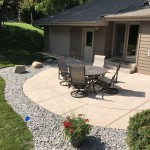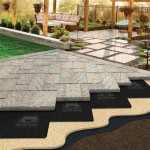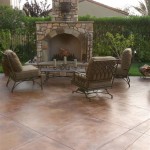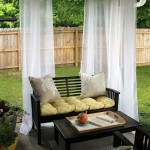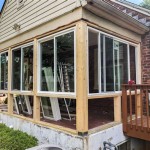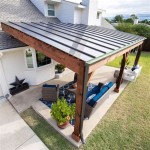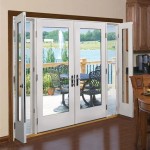Famous Patio Sails Installation 2024: Project Spotlight in Brazil
The year 2024 witnessed a surge in demand for patio sail installations across Brazil, driven by a growing awareness of their aesthetic appeal and functional benefits. Several prominent projects gained considerable attention, showcasing innovative designs and highlighting the versatility of shade sails in transforming outdoor spaces. This article will delve into some of these notable installations, analyzing their key features, the challenges faced during construction, and the overall impact on the surrounding environment.
Patio sails, also known as shade sails, are tensile fabric structures used to provide shade and protection from the elements. Typically made from high-density polyethylene (HDPE) or woven polyester, these sails are suspended between multiple anchor points, creating a visually striking and highly functional shade canopy. Their popularity stems from their ability to offer a cost-effective alternative to traditional roofing structures, allowing for greater design flexibility and improved airflow.
Brazil, with its diverse climate ranging from hot and humid tropical regions to temperate southern areas, presents unique challenges and opportunities for patio sail installations. The need for effective sun protection, coupled with a desire for aesthetically pleasing outdoor living spaces, has fueled the adoption of shade sails in both residential and commercial settings. The following sections will explore some of the most discussed patio sail projects of 2024 in Brazil, shedding light on the factors that contributed to their success.
Innovative Design and Material Selection at the 'Fazenda da Serra' Resort
One of the most talked-about projects was the installation of a large-scale patio sail system at the 'Fazenda da Serra' resort, located in the mountainous region of Minas Gerais. The resort aimed to create a comfortable outdoor dining area that could accommodate a large number of guests while providing protection from the intense Brazilian sun. The design team opted for a multi-sail configuration, utilizing overlapping triangular and quadrilateral sails to maximize shade coverage and create a visually dynamic canopy.
The material selection process was crucial to the success of the project. Given the resort's location in a high-altitude environment with frequent temperature fluctuations and strong winds, the chosen fabric needed to be durable, weather-resistant, and UV-stabilized. After careful consideration, the project team selected a high-quality HDPE knitted fabric, known for its excellent tensile strength, breathability, and resistance to fading. The fabric was also treated with a specialized coating to enhance its water repellency and prevent the growth of mold and mildew.
The installation process required careful planning and execution, particularly due to the challenging terrain and the size of the sails. The anchor points were strategically positioned to minimize the impact on the existing landscape and to ensure optimal load distribution. The installation team employed specialized rigging techniques and tensioning systems to ensure that the sails were properly tensioned and securely anchored. The result was a stunning and functional outdoor space that seamlessly blended with the natural surroundings, providing guests with a comfortable and enjoyable dining experience.
The 'Fazenda da Serra' project demonstrated the importance of careful design, material selection, and installation techniques in achieving a successful patio sail installation. The use of high-quality materials and innovative design features ensured that the sails not only provided effective shade but also enhanced the aesthetic appeal of the resort. The project also highlighted the importance of considering the specific environmental conditions of the installation site when selecting materials and designing the sail configuration.
Addressing Coastal Challenges at the 'Praia dos Anjos' Beach Club
Another prominent project involved the installation of patio sails at the 'Praia dos Anjos' beach club in Rio de Janeiro. The beach club sought to create a shaded area for its patrons while maintaining an open and airy atmosphere. The coastal location presented unique challenges, including high winds, salt spray, and intense UV radiation. The design team had to take these factors into account when selecting materials and designing the sail configuration.
To address the challenges posed by the coastal environment, the project team opted for a woven polyester fabric with a specialized PVC coating. This material offered excellent resistance to salt spray, UV degradation, and mildew growth. The coating also provided enhanced water repellency and wind resistance. The sail configuration was designed to minimize wind resistance and prevent the sails from catching excessively in strong gusts. The anchor points were reinforced to withstand the high wind loads, and stainless steel hardware was used throughout the installation to prevent corrosion.
The installation process was carefully coordinated to minimize disruption to the beach club's operations. The project team worked closely with the club management to schedule the installation during off-peak hours and to ensure that the work area was properly cordoned off. The installation crew employed specialized equipment and techniques to minimize the impact on the surrounding environment. The result was a stylish and functional shade structure that provided patrons with a comfortable and protected space to relax and enjoy the beach.
The 'Praia dos Anjos' project exemplified the importance of considering the specific environmental conditions of the installation site when designing and installing patio sails. The use of durable, weather-resistant materials and careful installation techniques ensured that the sails could withstand the harsh coastal environment and provide long-lasting performance. The project also highlighted the importance of collaboration between the design team, the installation crew, and the client to ensure a successful outcome.
Sustainable Practices in the 'Jardim Botânico' Community Center Installation
A project that garnered significant attention for its environmentally conscious approach was the patio sail installation at the 'Jardim Botânico' community center in Curitiba. The community center aimed to create a shaded outdoor space for educational programs and community gatherings, while minimizing its environmental impact. The design team prioritized the use of sustainable materials and construction practices throughout the project.
The project team selected a recycled polyester fabric for the sails, made from post-consumer plastic bottles. This material offered comparable performance to virgin polyester fabric while reducing the project's carbon footprint. The anchor points were designed to minimize disruption to the existing vegetation, and the installation team employed low-impact construction techniques. The project also incorporated a rainwater harvesting system to collect rainwater from the sails and use it to irrigate the surrounding garden.
The installation process was carefully planned to minimize waste and pollution. The project team utilized prefabricated components to reduce on-site construction time and waste generation. The installation crew employed electric-powered equipment to reduce noise and air pollution. The project also included an educational component, with signage explaining the sustainable design features and the benefits of using recycled materials.
The 'Jardim Botânico' project demonstrated the potential for patio sails to be incorporated into sustainable building practices. The use of recycled materials, low-impact construction techniques, and rainwater harvesting systems minimized the project's environmental impact and provided a valuable educational opportunity for the community. The project also highlighted the importance of considering the entire lifecycle of the materials used in patio sail installations, from sourcing to disposal.
These installations represent a cross-section of the innovative and impactful patio sail projects undertaken in Brazil during 2024. They showcase the adaptability of shade sails to diverse environments and needs, from luxury resorts to community centers. The success of these projects hinges on careful planning, appropriate material selection, and skilled installation, taking into account site-specific challenges and opportunities.
Furthermore, these projects underscore the growing importance of sustainability in construction. The 'Jardim Botânico' installation, in particular, sets a precedent for future projects, demonstrating how patio sail installations can contribute to environmental conservation and community engagement. The trends observed in these projects suggest a continued focus on durable, weather-resistant materials, innovative designs that maximize shade and airflow, and environmentally responsible construction practices in the Brazilian patio sail market.

Jardim Esquina Viascape Design Archdaily Brasil

Cabana Das Velas Advanced Architecture Lab Wiki World Archdaily Brasil

Tela Toldo Areia Sombreamento Shade 5x2 5 Kit Instalação
/i.s3.glbimg.com/v1/AUTH_da025474c0c44edd99332dddb09cabe8/internal_photos/bs/2023/y/G/G7dQ16Sa6tkxsBOZd1uw/divulgacao-esquenta-rio-boat-show-.jpg?strip=all)
De Carros Luxo Que Inspiram Barcos A Iate R 55 Milhões Igual Ao Cristiano Ronaldo Confira As Atrações Do Rio Boat Show

Cabana Das Velas Advanced Architecture Lab Wiki World Archdaily Brasil

Cabana Das Velas Advanced Architecture Lab Wiki World Archdaily Brasil
/i.s3.glbimg.com/v1/AUTH_da025474c0c44edd99332dddb09cabe8/internal_photos/bs/2024/t/I/Sez826Qx60dJV10BYBAQ/photo-2022-10-26-20-53-02.jpg?strip=all)
Saiba Como é A Experiência De Viajar Em Veleiro Cruzeiro Luxo Pela Europa Que Conta Com Três Mastros E 28 Velas

Ocaporã Hotel All Inclusive Porto De Galinhas Pe

Excursion A Full Day In Jericoacoara Power Traveller

Os 10 Melhores Restaurantes Saint Julians Atualizado Junho 2025
Related Posts

